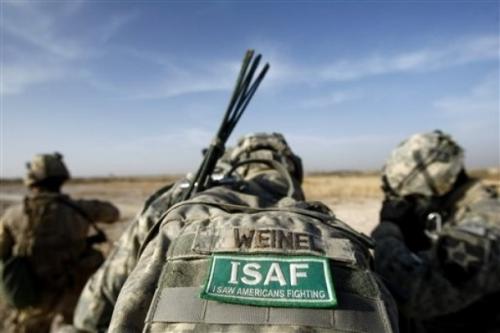 From Foreign Policy: Despite all the cynicism, change, as the old saying goes, also provides the illusion of progress, and nothing spells relief quite like a good old-fashioned shuffling of the decks. Most U.S. forces in Afghanistan, according to statements made earlier this week, are to be formally placed under NATO command. That’s about 20,000 troops — the bulk of Operation Enduring Freedom (a non-NATO mission) minus a unit of prison guards and some Special Forces elements. The move doesn’t appear to change much, given that McChrystal already commands both missions. According to spokesman Vice Admiral Greg Smith, "It’s just a matter of moving things from one account in the ledger to another…"
From Foreign Policy: Despite all the cynicism, change, as the old saying goes, also provides the illusion of progress, and nothing spells relief quite like a good old-fashioned shuffling of the decks. Most U.S. forces in Afghanistan, according to statements made earlier this week, are to be formally placed under NATO command. That’s about 20,000 troops — the bulk of Operation Enduring Freedom (a non-NATO mission) minus a unit of prison guards and some Special Forces elements. The move doesn’t appear to change much, given that McChrystal already commands both missions. According to spokesman Vice Admiral Greg Smith, "It’s just a matter of moving things from one account in the ledger to another…"
NATO’s high command and men on the battlefield breathe completely different air, however, even in the "high-speed, low-drag" universe that McChrystal is seeking to cultivate. NATO is complex, and Afghanistan is immense; disconnects will persist between headquarters and units. More, most of the forces being reassigned to the NATO mission are American. So it’s a little unclear whether this is just meant to improve McChrystal’s control over forces he already commands, or to streamline administrative and communication channels between the U.S. and everyone else in ISAF. Ideally, both will happen, and all will be well. In theory, NATO and its missions provide "interoperability frameworks," umbrellas of common standards and resources that enable different nations to work together. In practice, though, the mechanisms are only as strong as the weakest link in the chain. Ultimately, NATO’s greatest strength is simply presence — its ability to endure over the long term — not the minutiae of individual commanders’ decisions or the tactical details of specific operations. A more consolidated mission speaks well to that strength. (photo: AP)
Image: ap_3_19_10a.jpg
